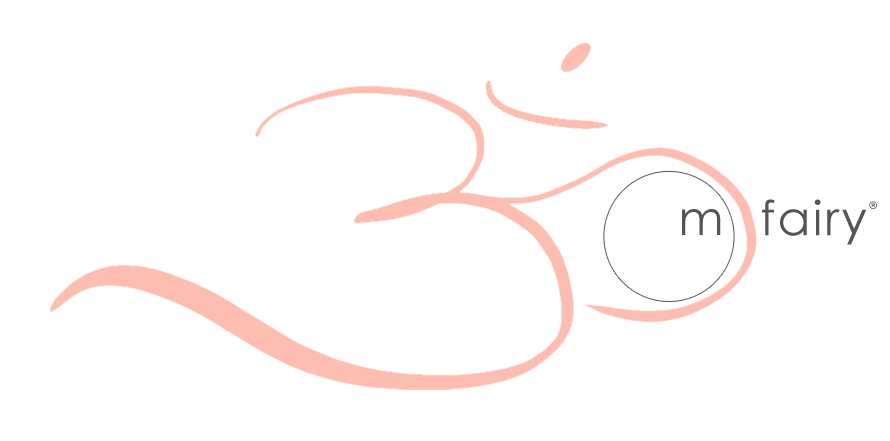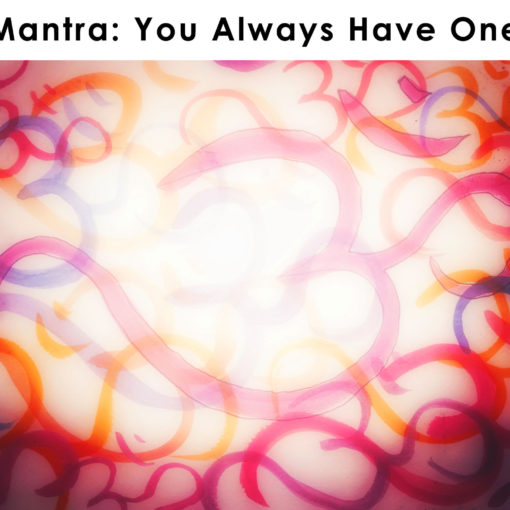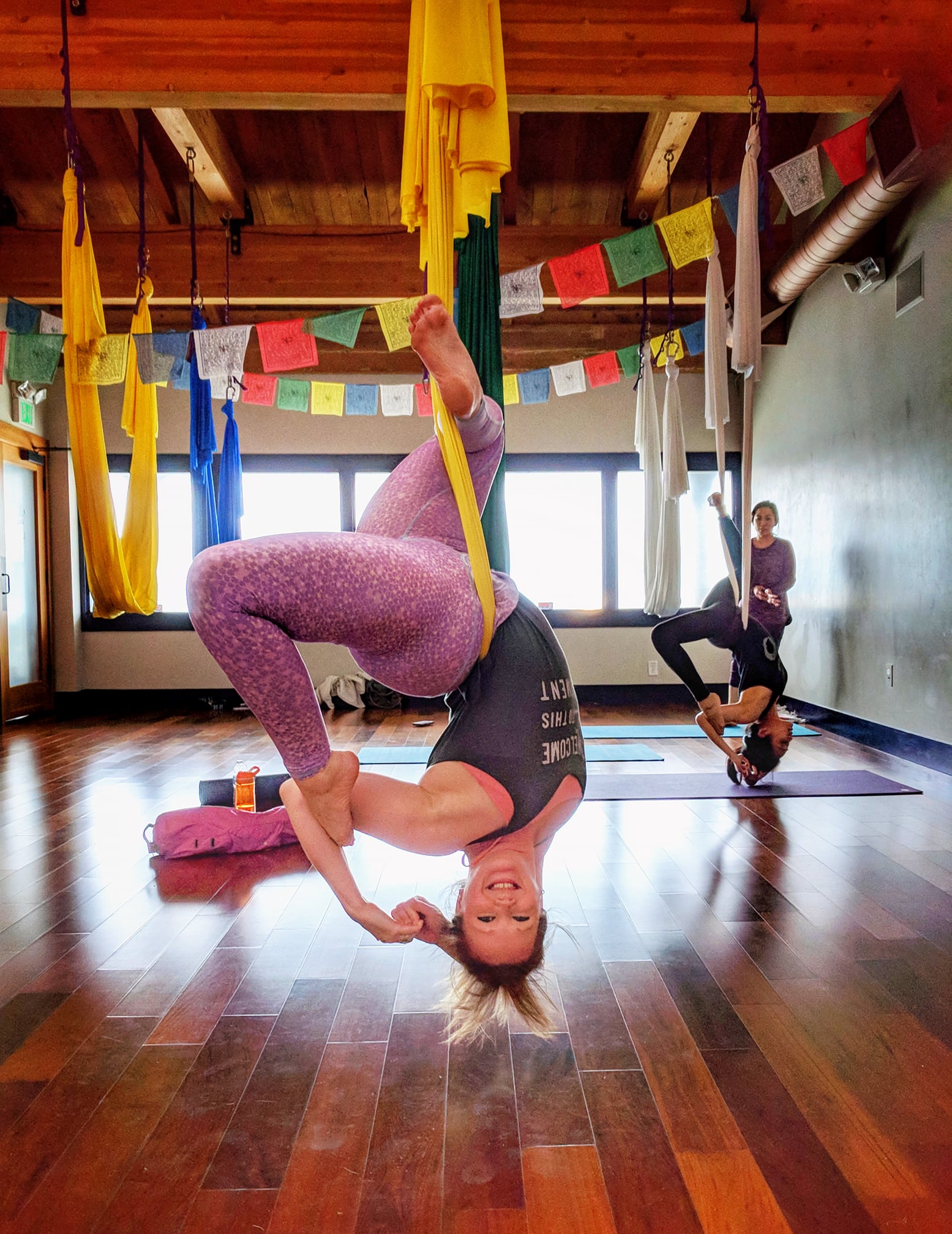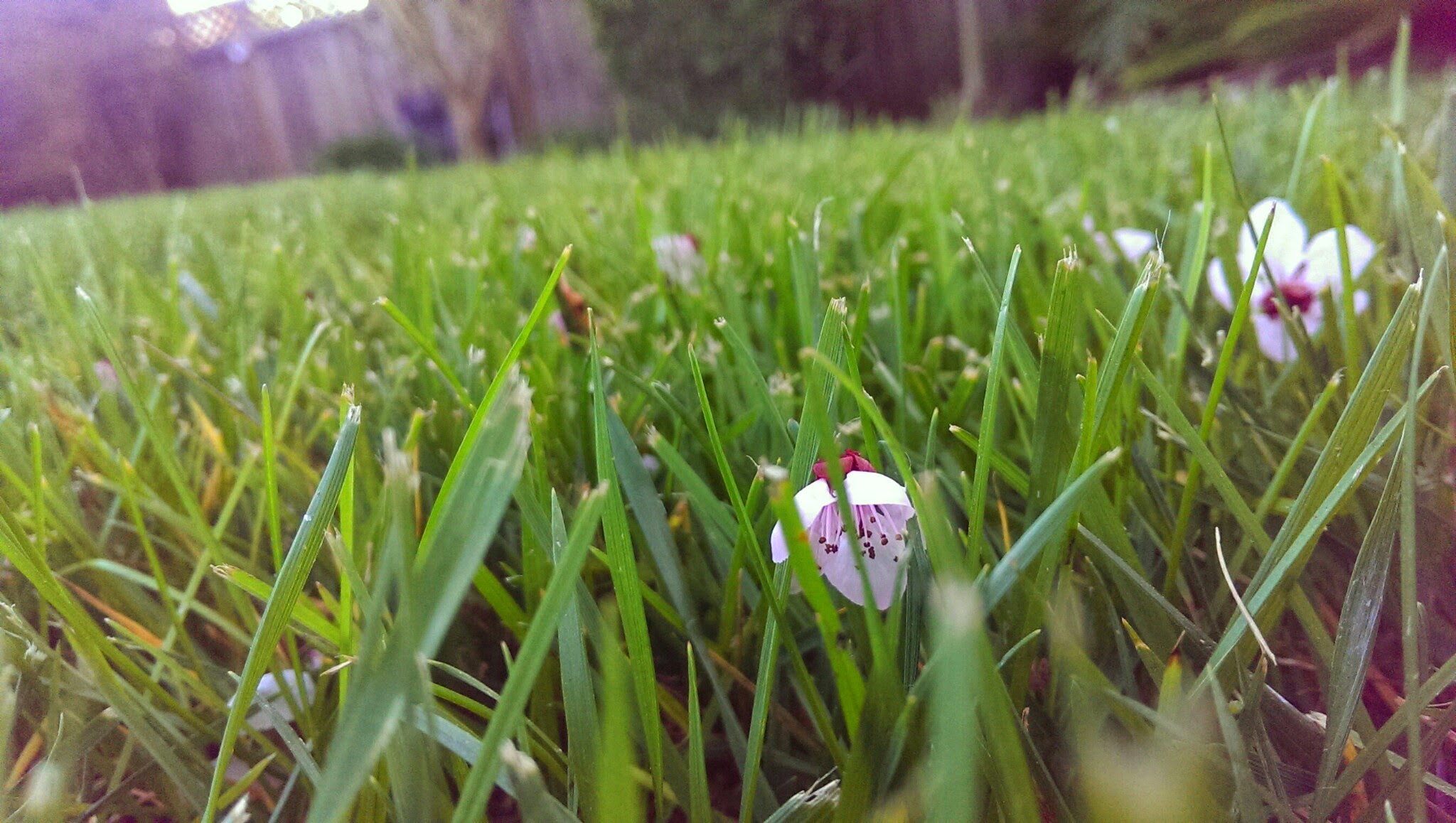
A daily home yoga practice is important to me, and over the years, I’ve noticed that my home practice happens on and off the mat. The thing I’m passionate about with yoga is its ability to change you – your body, your awareness, your outlook on life – if only you spend a little time each day working yoga into your life. It’s what this blog is dedicated to – helping you discover the many ways to practice, not just one set sequence of asana, though that has its benefits too.
A while back, I took some time off to spend with my cousin before she heads off to college. We did a little roadtripping, driving down the California coast, spending some time in Disneyland, and just having a lot of fun. When I came back to my normal schedule of classes, one of my students asked, “Do you practice yoga every day when you are traveling?”
My answer was yes, but it might have been a little misleading. While I do travel with a travel mat (I love my Manduka, and no, they aren’t paying me to say that), and often during my trips I roll it out for at least a round of sun salutations, headstand, shoulderstand, and forward bend, I have to say there is so much more to my yoga practice than rolling out the mat. When it comes to the body, what we do repetitively, daily, has more impact on us than the hour we spend stretching, strengthening, and trying to undo our day. When it comes to the mind & the breath, taking the feeling, focus, control, awareness, and clarity you can find on the mat out into the world is one of the greatest things you can take away from this practice.
An example: The couple of days my cousin and I spent in Disneyland during our road trip. Lots of walking, lots of pavement, and lots of lines, especially during this summer’s 60th anniversary celebration. I try to make use of the lines’ turnstiles, propping a leg up on a bar here, taking a little forward fold or modified down dog there. It really makes a difference to put the body into these shapes & breathe. Hips open back up, the back feels nice and flexible. Movement does a body good. I don’t have one extra stress on me – feeling strained and overly tired.
Which is good. During one of these long lines, a confrontation happened. It all started innocently. A woman walked past us to the man in front of us and was asking which line was the line she should be in (fast pass or regular). Then, many people start streaming past us as we stood in line. “Umm, excuse me, but we are in line,” I said, because I thought everyone was just following the leader, and somehow, people thought we weren’t in line. This was met with a hostile voice.
“This is our family. He ran ahead to get in line, and we’re just getting in line with him.” At this point, my brain is trying to process that this group of 15 or so people is a family, but before I can even get out an “oh…”, she continues. “But I know you’re going to give me the stink eye, so you might as well just go in front of us. I don’t want to be the subject of that for the next 60 minutes.”
This is a defining point for me of how yoga has changed me. In a past life, this would have started a good row. I’m sure I would have said something snarky back to her and escalated the whole thing. My cousin, who was watching me, later told me she was surprised I didn’t. In that moment, though, I realized the words she said to me had nothing to do with me. I wasn’t giving her the stink-eye, nor did that ever cross my mind. Besides processing the fact that there was a very large family traveling together, I was also thinking about how I get upset when people don’t realize my husband and I are together because he’s Indian and I’m extremely white. This family was blended as well, and I had missed their interactions that made them seem like a family. “Hmm, maybe I should cut other people some slack.” Then I’m hit with the stink-eye comment.
“Thank you.” I just accepted her offer. Of course, this was met with more occasional comments for the next hour which I eventually tuned out. The reality of the situation is on either side of the group I would have been listening to it, so I might as well take the bright lining of not having to wait behind the extra large group. We enjoyed the ride and went on about our day.
Fast forward to this past week. I’m having a conversation with a TSA agent who discovered I taught yoga. He asked, “So, how many yoga classes does a person need to go to get flexible?” I forget what my answer was, probably something along the lines of “it depends…”, and in our short interaction, I couldn’t fully formulate my thoughts quickly and concisely beyond, “doing a little every day is going to take you further than going to a long class once a week.” What I really should have said is, “Whatever you want to increase flexibility in, stretch that area every day. You’ll probably see improvement during the week. It might not be reaching your toes by the end of the week if right now you struggle to hinge forward at the hips to a 90º angle, but you will see improvement.” The thing about seeing this improvement is whether you tune in, notice how your body is changing, or if you’re focused on reaching the destination pose – I must, I must, I must touch my toes!
This is not to say there’s not benefit in going to classes – far from it or I wouldn’t be teaching them. Since this is a post about a daily home practice, however, I’ll move on and cover that another day.
The second thing I came across this past week was research from the National Institutes of Health. I was perusing new-to-me research on yoga and its effects on our health, and I stumbled upon a Swedish study from late 2013 on the impact of yoga on blood pressure in patients with hypertension/high blood pressure. Patients were divvied up into 3 groups – group 1 had a class with a yoga instructor, group 2 was instructed on two yogic exercises to perform at home, and group 3 was the control group with no intervention.
Despite the fact that the yoga class group did the same exercises that the home group did and then some, the results were somewhat unexpected. Group 2, who practiced at home, showed a decline in diastolic blood pressure as well as significant improvement in self-rated quality of life. Group 1 did not. Of course, this led to discussion of why, and many theories were thrown about. That’s the problem with medical studies – they usually open up a whole new can of worms. Did the 20 minute discussion that group 2 had with their doctor on how to do the exercises have influence? Was it the fact that group 2 did more sessions than group 1? Did the fact that group 1 had to be in a social setting actually increase anxiety and stress?
I’ll circle back to what I said in the beginning of this post, because it bears repeating: When it comes to the body, what we do repetitively, daily, has more impact on us than the hour we spend stretching, strengthening, and trying to undo our day. When it comes to the mind & the breath, taking the feeling, focus, control, awareness, and clarity you can find on the mat out into the world is one of the greatest things you can take away from this practice.
The two exercises group 2 were taught was a spinal flex and a breathing exercise, both of which can easily be done just about anywhere. One of the things mentioned in the discussion of the study was the fact that the number of yoga sessions each group did were recorded by the subjects. So there is possibility for issue with the number of sessions recorded. However, group 1, who had a CD to follow along with at home along with their once-a-week class, participated in less sessions overall than group 2. Group 1 did about 4 sessions per week, group 2 about 6. Was it was because group 2 had a shorter practice, or because group 2 learned as opposed to following along?
A personal anecdote that seems pervasive in others: When I go somewhere to practice, or even if I dedicate a significant chunk of time to my home practice, there’s a feeling of I’ve done something good for myself, no need to do something extra. If I’m in maintenance mode, though, just getting a few minutes here and there to meditate, breathe, move – I tend to try to be better about health overall. There’s no sense that I’ve done something major so I can slack off.
Over time, I’ve realized how much of these practices can be worked into my day. Whether it is simply propping my foot up on a bar to mimic extended hand to big toe pose, taking a break with legs up the wall while I decide my next move, or taking a few deep, calming breaths before I respond to a hostile situation – all of these things make me feel better, and none of them are hard to do. So why not do them, whether I’ve done a 2-hour long practice today or I’ve only sat for 5 minutes to practice some pranayama? Why not take my pranayama with me on my commute? Why not rest in savasana for 10 minutes instead of 10 minutes flipping aimlessly through the interwebs? Of course an hour on the mat feels great, but so do these things, and these little bits add up over time.
I’ve struggled with how to really talk about developing a daily practice in shorter installments, as opposed to longer stories, such as this one. So this month I’m posting daily about how I work yoga into my day on instagram & my facebook pages with the hashtags #theresnoplacelikeom #theresnoplacelikenow #practicedaily. Like my practice, posts run the gamut from things you would expect, such as asana, to meditation, to how I practice mindfulness on my commute and out in the world. Hopefully this will give you an easily digestible view of a few of the many ways you can work yoga into your day, some familiar, some that you maybe never thought of as yoga. Because there’s no place like home, no place like now, to practice. And there’s no time like now to share it with the world and be someone’s inspiration. So feel free to share with me what your daily practice looks like – here, on instagram, or on facebook.
Update: Here’s the compiled version of my 30 days of practice.




